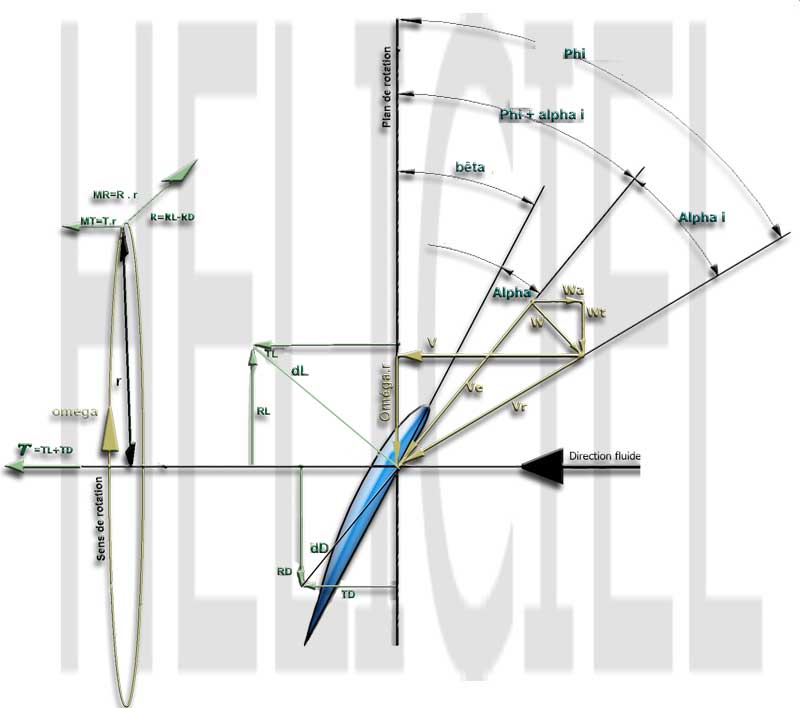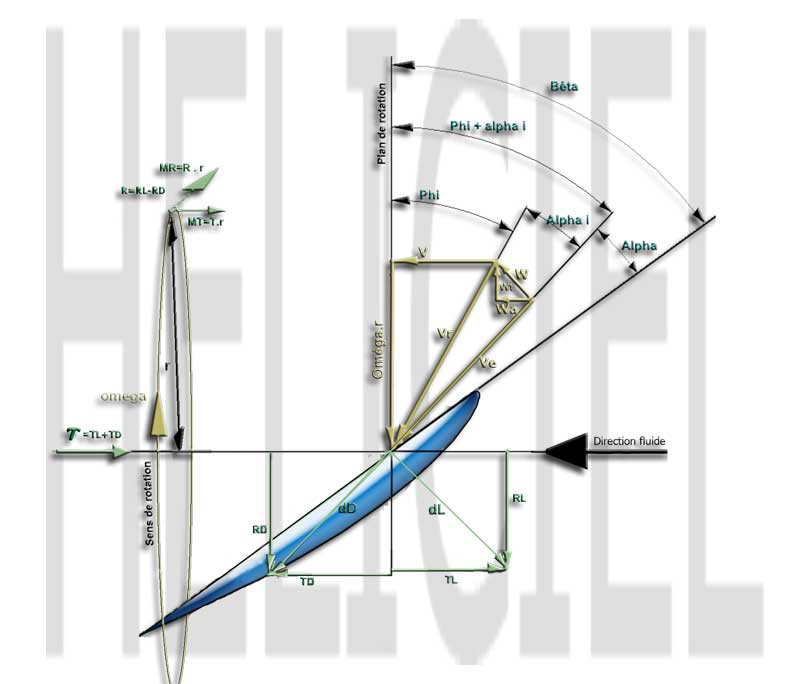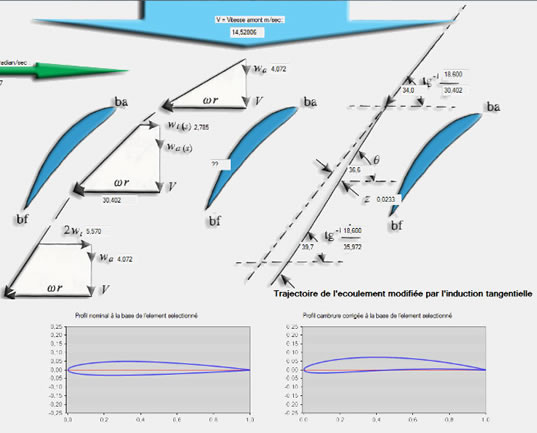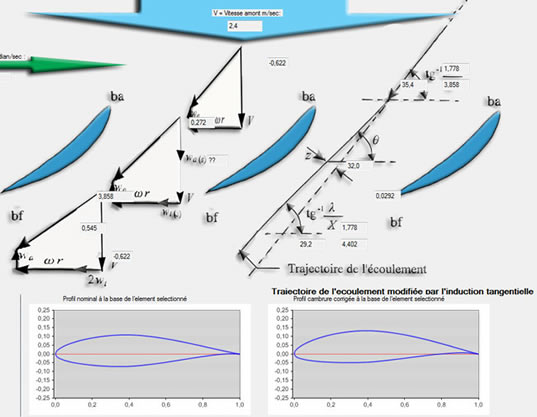Understand and master the induced velocity for computing the twisting of the blades:
The induced velocities are essential for the definition of twist in the blade. Even if the user Heliciel software does not need to master this concept, knowledge of the phenomenon participates in the understanding of the calculation method.
This brief description, therefore gives a first idea of induced velocities, for detailed formulas, I invite you to visit: propeller calculations detailed theoriesThe phenomenon of induction:
When the fluid passes through the propeller, its trajectory is modified by the profile of the propeller: the torque generated on the blade is also generated on the fluid (action-reaction). Similarly the axial force on the propeller, is also applied to the fluid. These changes in speeds and directions are named:
- Axial induction, for the axial component
- induction tangential for the tangential component
- Tangential induction coefficient is applied to the tangential speed
- The axial induction coefficient is applied to the axial velocity.
In these figures, Wa and Wt are respectively the axial and tangential induced velocities.
Represented here for a propeller wind turbine way


These inductions are felt downstream of the propeller, but also upstream of the propeller.The speed actually received by the profile of the blade is therefore slightly different from the apparent speed. The profile acts on the direction and velocity of the fluid before entering into direct contactImagine situations for visualize the reality of the induced velocity (positive or negative)::
- The air just before an airplane propeller turning while the plane is stopped on the track, is drawn through the propeller !(axial and tangential velocities induced positive)
- The air just before a propeller wind is slowed by the propeller, the propeller forms a plug more or less "porous",it results in a bypass around the edges, whose limit of betz result!(induced velocities, axial and tangential negative)
The difficulty of calculating the induced velocities lies in the inter-dependence of induction and performance profiles: This induction is caused by the drag and lift profiles, but the drag and lift are modified by the induction.... We must solve the equation system which verifies the drag and lift, depending on the speed further upstream, and the rotational speed.
to assess the induction, Heliciel uses blade element method coupled with the vortex theory (bem) and proceeds by Newton method to converge to a result.
Naturally, the software tool Heliciel calculating these speeds to create the optimum twist in your propeller, it remains that to use 3D files to create the propeller's prototype .
The tangential induced velocity can also also affect the shape of the profile:
The fluid path is bent by the change in tangential velocity between the leading edge and the trailing edge. This curvature of the stream fluid changes the camber profile relative to the fluid. To preserve its theoretical camber, the actual profile should be deformed depending on the curved path of the fluid.
The software Heliciel applies this geometric correction to the 3D model, and export 3D:
Example of correction of a profile to keep the theoretical camber at the foot of a blade axial fan:

Example of correction of a profile to keep the theoretical camber at the foot of a blade of a tidal turbine


 Global site map
Global site map Mecaflux
Mecaflux Tutorials Mecaflux Pro3D
Tutorials Mecaflux Pro3D Tutorials Heliciel
Tutorials Heliciel Mecaflux Store
Mecaflux Store Compare software functions
Compare software functions Quotes, Orders, Payment Methods
Quotes, Orders, Payment Methods project technical studies
project technical studies